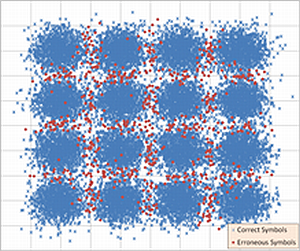Optical Communication Laboratory

High performance forward error correction is a substantial part of dense wavelength division multiplexing modems for optical communication at very high data rates. A limiting factor for the application of algorithms with exceptionally good performance is the very limited implementation complexity at very high data rates (100 Gbps an more). Commercially available modems already make use ofvery efficient „third generation“ hard decision codes, but further improvements are requested. A main goal of the project is to identify further improved forward error correction methods (e.g. using soft decision decoding) that achieve very high throughput with moderate implementation complexity. The project also asks if even more enhanced general purpose forward error correction algorithms, ignoring relevant properties of the real transmission channel, achieve better results, in practice, than compound detection and decoding schemes, which need to partition the available complexity amongst simpler components, but account for specific channel properties.